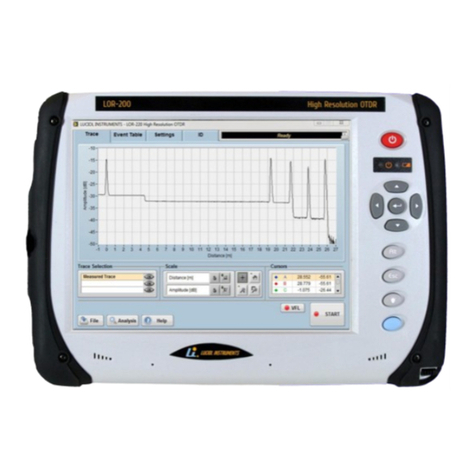
Table of Contents
1 INTRODUCTION...................................................................................................................................... 3
1QUICK GUIDE .................................................................................................................................. 4
1.1 INSTALLATION LOR-200/220..................................................................................................................4
1.2 INSTALLATION LOR-200/220-U..............................................................................................................4
1.3 SOFTWARE QUICK START ..........................................................................................................................4
1.4 NOTES .................................................................................................................................................5
2HARDWARE OVERVIEW LOR-200/220............................................................................................. 6
2.1 THE FRONT PANEL..................................................................................................................................6
2.2 THE OPTICAL PORT.................................................................................................................................6
2.3 THE COMMUNICATION PORTS ..................................................................................................................7
2.4 THE POWER CONNECTOR.........................................................................................................................8
2.5 CHARGING THE BATTERY..........................................................................................................................9
2.6 CHANGING THE BATTERY .........................................................................................................................9
3HARDWARE OVERVIEW LOR-200/220-U ....................................................................................... 10
4OTDR SOFTWARE OVERVIEW........................................................................................................ 11
4.1 THE MENU FUNCTIONS .........................................................................................................................12
4.1.1 The File Menu .........................................................................................................................12
4.1.2 The Analysis Menu..................................................................................................................12
4.1.3 The Help Menu........................................................................................................................12
4.2 THE TABS............................................................................................................................................12
4.2.1 The Trace Tab .........................................................................................................................12
4.2.2 The Event Table Tab................................................................................................................14
4.2.3 The Settings Tab .....................................................................................................................15
4.2.4 The ID Tab...............................................................................................................................18
5MAKING MEASUREMENTS............................................................................................................ 18
5.1 GENERAL MEASUREMENT SETUP..............................................................................................................18
5.1.1 Setting pulse-width and resolution.........................................................................................18
5.1.2 Setting the index of refraction ................................................................................................20
5.1.3 Setting the Rayleigh backscatter coefficient...........................................................................21
5.2 EXAMPLE MEASUREMENT SESSIONS..........................................................................................................22
5.2.1 Fiber loss measurement..........................................................................................................22
5.2.2 Single event analysis - Insertion loss and reflectance .............................................................23
5.2.3 2-point loss measurement ......................................................................................................24
5.2.4 Length measurements ............................................................................................................24
5.2.5 Testing a passive optical network (PON) ................................................................................26
5.2.6 Comparing traces....................................................................................................................28
5.2.7 Auto event detection and the event table ..............................................................................30
6CREATING REPORTS, PRINTING RESULTS ...................................................................................... 32
7VISUAL FAULT LOCATOR (OPTION) ............................................................................................... 33
8OPTICAL POWER METER (OPTION)................................................................................................ 33
A. SPECIFICATIONS............................................................................................................................ 35
B. WARRANTY AND MAINTENANCE POLICY...................................................................................... 36
B.1. LIMITED WARRANTY .........................................................................................................................36
B.2. EXTENDED WARRANTY OPTIONS..........................................................................................................36
B.3. INSTALLATION AND TRAINING .............................................................................................................36
B.4. CONTACT .......................................................................................................................................36
C. SAFETY.......................................................................................................................................... 37
C.1. LASER SAFETY..................................................................................................................................37




























